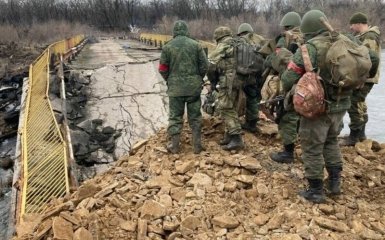The situation on the Russo-Ukrainian front has worsened. The Russian Federation uses its favourite tactic of "meat assaults".
"Meat grinder" is the main tactic of Russia on the eastern front in Ukraine
Things are far from calm on the eastern front in Ukraine. By the end of the weekend, the Armed Forces withdrew from three villages in the Donetsk region.
The Washington Post states that Ukraine was vulnerable without ammunition and fresh forces in the face of a Russian offensive.
Trying to seize the strategic initiative and break through the front line, the enemy concentrated the primary efforts in several directions, creating a significant advantage in forces and means.

Oleksandr Syrskyi
AFU Commander-in-Chief
In various sections of the front line, the Ukrainian authorities are considering whether to sacrifice people or territory. Urgently needed military aid from the US has not yet arrived and has not changed the course of the battle.
President of Ukraine Volodymyr Zelenskyy called on Western partners to show more political support, accelerating the process of Ukraine's accession to the European Union and NATO.
The alliance should not be afraid of its strength or shy away from its foundations — every country that shares common values and is ready to defend them deserves an invitation to join.

Volodymyr Zelenskyy
President of Ukraine
The publication writes that this discussion will stir Western capitals in the coming months. At the front, the picture is bleaker, casualties are rapidly increasing on both sides of the conflict. In decisive battles, Russia threw in waves of often ill-trained troops, suffering massive casualties, in an attempt to break through Ukrainian positions and deplete supplies. The "meat grinder" tactic became the basis of Russia's victories at Avdiivka and Bakhmut.
Losses of Russia in the war against Ukraine
The BBC tried to use independent sources and even aerial photographs of cemeteries in Russia to count the dead occupiers.
According to the latest estimates, the number of dead Russians exceeded the mark of 50 thousand, although it is recognised that the actual figure is most likely much higher.
Zelenskyy recently said that Russia has suffered about half a million casualties in the war, including 180,000 soldiers killed in action. It is impossible to verify this number. The Kremlin and its state propaganda channels worked to hide the extent of the disaster.
Leo Docherty, Britain's minister of state for the armed forces, said late last week that his government estimates that "around 450,000 Russian servicemen have been killed or wounded, and tens of thousands more have already deserted since the start of the war."
Docherty added that the Kremlin lost more than 10,000 armored vehicles, including nearly 3,000 main battle tanks, 109 aircraft, 136 helicopters, 346 unmanned aerial vehicles, 23 naval vessels of all classes and more than 1,500 artillery systems of all types.
On the other hand, Zelenskyy recently stated that Ukraine lost 31,000 defenders. Western intelligence officials dispute this estimate and believe the figure is much higher, probably more than double. Ukraine is much smaller than Russia and cannot compete with the Kremlin's mobilisation ability.
Journalists Missy Ryan and Siobhan O'Grady, citing their sources, say that Zelenskyy may be hiding the actual number of dead in Ukraine to maintain public morale.
A Ukrainian lawmaker, who spoke on condition of anonymity to be candid, said they believed Zelenskyy's statement in February that 31,000 soldiers had been killed since 2022 greatly understated the actual losses in the war.
In Ukraine, there are difficulties in mobilising people, which range from concerns about demobilisation with low pay to Kyiv's ability to help the families of the dead.
We see so many deaths and so many wounded. If the Russians advance, the military wants to know how long they will be there, the source told reporters.
Problems with replenishing the armed forces are as significant as the need to provide them with better weapons.
The manpower situation is becoming more and more of a problem. And if that is not resolved, then this aid package will not solve all of Ukraine's problems, Rob Lee, a former US Marine, told The Washington Post.
American policymakers have conservative expectations for how the war will play out in 2024. They hope Ukraine can hold the line, strengthen its defences, and prepare for another counteroffensive.
"I don't think Ukraine is in a position where it's likely to be able to take back significant territory in the next few months," a U.S. official said last week on condition of anonymity.
The losses of the Russian Federation in Ukraine crossed the red line on April 30
On the morning of April 30, Russia's losses in Ukraine crossed a new "red" threshold — amounting to more than 468,000 people, if counted since the beginning of the full-scale invasion. The General Staff of the Armed Forces of Ukraine published such data.
It was specified there that during the day the Armed Forces of Ukraine destroyed 1,250 soldiers of the enemy army.
The Russian Federation also lost equipment: two cruise missiles, one anti-aircraft vehicle, two anti-aircraft missiles, and 26 artillery systems.




